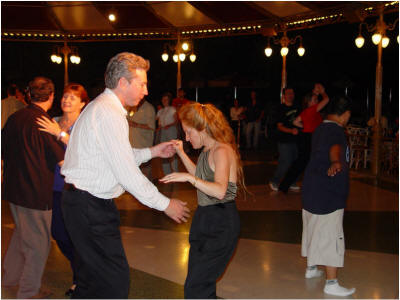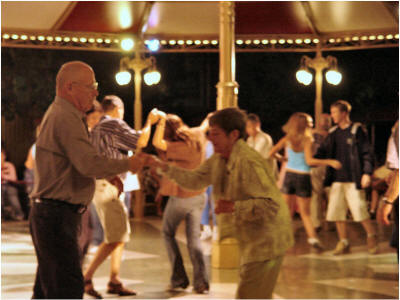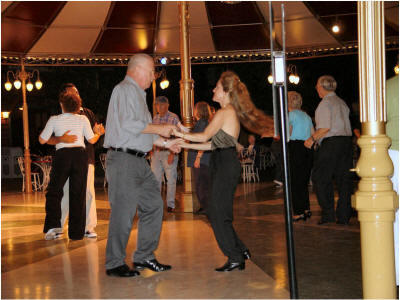Doo Wop Generally Means Swing Dancing
Move it, move it, move it
Dancing To DooWop In 2007
DooWop tunes were a perfect match for swing dancing. We dance three times a week and love to hear DooWop as we pass the night away. These are a few happy snaps of Sue, Michele, Franklin, and Paul at Disneyland on a Saturday night! The song you ask? Rockin' Robin (Duda)!
The term "swing dance" commonly refers to a group of dances that developed concurrently with the swing style of jazz music in the 1920s, '30s and '40s, although the earliest of these dance forms predate swing jazz music. The best known of these dances is the Lindy Hop, a popular partner dance that originated in Harlem and is still danced today. While the majority of swing dances began in African American communities as vernacular African American dances, a number of forms (Balboa, for example) developed within Anglo-American or other ethnic group communities.
Michele And Franklyn Heat Up The Floor

Michele And Franklyn At Disneyland
Swing jazz features the syncopated timing associated with African American and West African music and dance — a combination of crotchets and quavers (quarter notes and eighth notes) that many swing dancers interpret as 'triple steps' and 'steps' — yet also introduces changes in the way these rhythms were played — a distinct delay or 'relaxed' approach to timing. Today there are swing dance scenes in many developed countries throughout the world. Lindy Hop is often the most popular, though each city and country varies preferences various dances in different degrees. Each local swing dance community has a distinct local culture and defines "swing dance" and the "appropriate" music to accompany it in different ways.
Keep On Moving
In many scenes outside the United States the term "Swing dancing" is used to refer generically to one or all of the following swing era dances: Lindy Hop, Charleston, Shag, Balboa and Blues. This group is often extended to include West Coast Swing, East Coast Swing, Hand Dancing, Jive, Rock and Roll, Modern Jive, and other dances developing in the 1940s and later.
The variations continue, dictated by local dance community interests.

